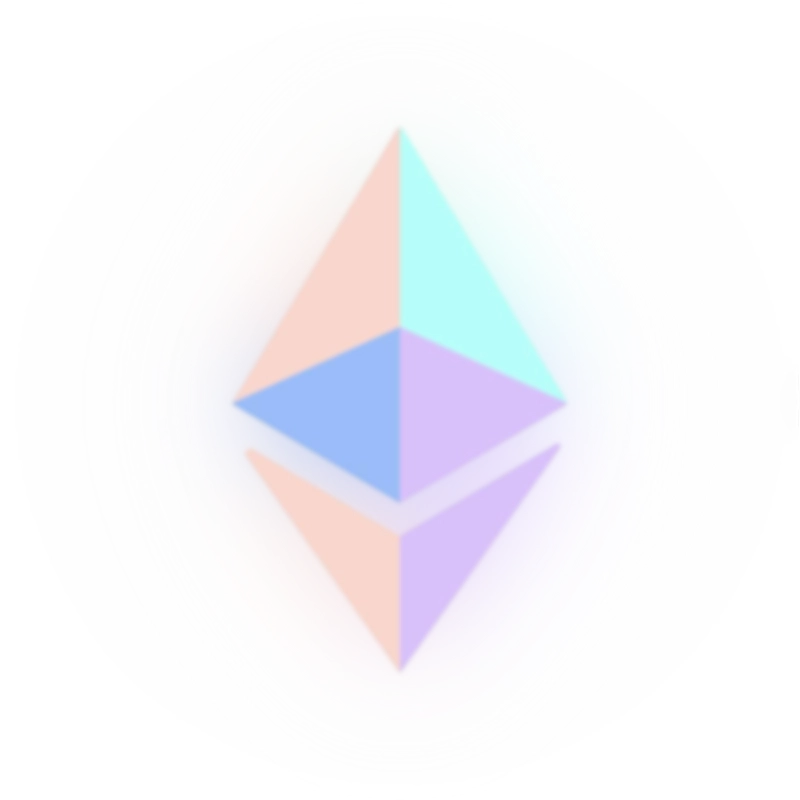Investing in crypto-assets carries risks of liquidity, volatility, and partial or total capital loss. Crypto-assets held are not covered by deposit and securities guarantee mechanisms.


Sign up for our newsletter
Partners
Coinhouse
Our accounts
Coinhouse
Coinhouse SAS with a capital of €210,000, RCS Paris 815 254 545, headquarters: 14 Avenue de l'Opéra 75001 Paris – support@coinhouse.com. Registered with the AMF for activities related to the purchase/sale of digital assets against legal tender, the exchange of digital assets for other digital assets, and the custody of digital assets for third parties under the registration number: E2020-001.
Coinhouse payment solutions
Company registered with the Paris RCS under the number 914 384 557, registered with the Prudential Control and Resolution Authority as a payment service agent under the number 727503 of the electronic money institution Treezor, headquartered at 33 Avenue de Wagram, 75017 Paris.
General conditions, disclaimers and legal documents.



Ethereum was introduced in 2013 in the form of a document, the “”White Paper“”, proposing an evolution of the Bitcoin protocol.
It was written by Vitalik Buterin, a young programmer on the Bitcoin team and co-founder of Bitcoin Magazine.
The concept quickly attracted the interest of other cryptocurrency enthusiasts at the time, who joined the project.
To name but a few: Anthony Di Iorio, Charles Hoskinson, Joseph Lubin and Gavin Wood.
These people are now considered co-founders of Ethereum.
To make his project a reality, Vitalik Buterin embarked on a crowdfunding campaign.
A Bitcoin fundraiser(buy Bitcoin) is taking place from September 2, 2014 to finance the developments needed to launch the network.
He managed to raise $18.3 million. Seduced by the project’s objectives, programmers get involved and the first version of Ethereum is released in 2015 under the name “” Frontier “”.
Buy Ethereum safely with Coinhouse.
Ethereum was launched in 2015 by Vitalik Buterin, a young programmer and cryptography enthusiast, who wanted to create a decentralized platform for developing applications beyond simple financial transactions, unlike Bitcoin.
The idea for Ethereum was born in 2013 when Buterin published the project’s whitepaper, detailing a vision for a “programmable blockchain” where developers could create decentralized applications (dApps) and smart contracts, automatically executed without a trusted third party.
In 2014, Ethereum raised funds in the form of an Initial Coin Offering (ICO), becoming one of the largest at the time, to finance the network’s development.
Ethereum’s founding team included several influential figures from the blockchain ecosystem. In addition to Buterin, there was Gavin Wood, who created the Solidity programming language for smart contracts and played a crucial role in Ethereum’s technical architecture.
Joseph Lubin, entrepreneur and co-founder of ConsenSys, has also been a major player in the promotion and development of the Ethereum ecosystem.
Other co-founders, such as Anthony Di Iorio, Mihai Alisie, Amir Chetrit, Charles Hoskinson, and Jeffrey Wilcke, also contributed significantly to the early stages of the project, each bringing a range of skills from development to financing.
Over the years, Ethereum has continued to evolve, supported by a global community of developers, researchers and entrepreneurs.
In 2022, Ethereum reached a major milestone with“The Merge”, an update that switched from a Proof of Work (PoW) to a Proof of Stake (PoS) consensus mechanism, significantly reducing network energy consumption and laying the foundations for improved scalability and security.
Today, Ethereum is the world’s second largest blockchain by market capitalization, and continues to play a leading role in blockchain innovation with projects in decentralized finance (DeFi), NFTs, and beyond.
Live Ethereum courses with Coinhouse.
Ethereum is a decentralized blockchain platform that enables developers to create and deploy decentralized applications (dApps) and smart contracts.
Here’s how Ethereum works:
The literal translation from English, which gives the term “smart contracts”, is not the best way to understand what we’re talking about.
These “smart contracts” are programs designed to automate one or more actions when pre-requisite conditions, defined by the program’s creator, are met.
For example, consider an auction system. A smart contract could be created to receive bids for a particular item for sale.
In fact, it will be able to determine the highest bid, return lower bids at the end of a given period, and so on.
Of course, this kind of program can also be created on a conventional computer, via a website such as eBay. However, smart contracts have a number of advantageous features:
But smart contracts also have a number of drawbacks:
On the Bitcoin network, the cost of a transaction depends on two factors:
– network saturation at any given time,
– the size of the transaction in number of characters.
On Ethereum, the cost of each transaction also introduces a new factor: the IT complexity required to execute the transaction.
A simple transaction sending Ether from one user to another will have a low cost. Whereas a call to a smart contract that triggers complex calculations will have a high cost.
This cost, known as gas, must be paid by the issuer of each transaction, in Ether.
Bear in mind that every call to every smart contract is recalculated on every machine that makes up the Ethereum blockchain.
This has an impact on the entire network.
It is therefore not conceivable to run intensive video game or artificial intelligence calculations on Ethereum, at least not for a few years.
The possibilities offered to developers by the Ethereum network are vast. Anyone can develop applications on Ethereum. The only prerequisite is the ability to code in Solidity, the network’s programming language.
One of the first functions to be used is “” tokenization “”, i.e. the creation of new cryptocurrencies.
They are called “” tokens “”, which can be translated as “digital tokens”, issued thanks to the Ethereum blockchain and hosted on it. Tokens can be held, quantified and exchanged digitally between two people.
Before the development of Ethereum, creating a new crypto asset was extremely complicated:
– we had to create a blockchain,
– a mining network,
– wallets,
– economic management of the system,
– succeed in creating demand and adoption.
With Ethereum, creating a new crypto asset is as simple as generating a smart contract and publishing it, which can take just a few minutes.
Instantly, the new asset is exchangeable, secured by the network and interoperable with the entire Ethereum ecosystem.
Designers simplify their lives and use the existing infrastructure more or less free of charge.
To create a new token on the Ethereum blockchain, you need to comply with certain “standards” imposed by the network.
The most popular of these standards is called “ERC20”. Each ERC20 token is managed by a smart contract that presents a list of minimum functions:
– how to create new units, divide them into fractions, destroy them, transfer them to another portfolio, etc.
Ether tokens (ETH) are essential to the operation of the Ethereum blockchain and serve several key purposes:
In 2024, Ethereum made significant advances consolidating its dominant position in the cryptocurrency ecosystem. The U.S. Securities and Exchange Commission (SEC) approved the first spot Ethereum ETFs, paving the way for massive institutional investment and potentially billions of dollars in capital inflows, which could stimulate a notable rise in its price.At the same time, the “Dencun” upgrade was rolled out, aimed at reducing data fees and improving transaction efficiency.This improvement also benefits Layer 2 networks like Arbitrum and Polygon, making data storage cheaper and more efficient.
Ethereum revenues tripled in the first quarter of 2024, reaching $370 million, largely thanks to an increase in transaction fees and network usage. In addition, total locked value (TVL) in Ethereum’s DeFi ecosystem reached $55.9 billion, reflecting significant growth.
These developments, combined with increased institutional adoption and ongoing technology updates, make Ethereum a major force in the cryptocurrency sector for 2024.
2025
At the start of 2025, Ethereum is experiencing a drop in price, from around $3,400 to $3,170, a decrease of 7% since January 1. This trend contrasts with the rise of other cryptocurrencies, such as Solana (SOL), which recorded a notable 31% increase over the same period.
However, Ethereum’s history shows that the months of February and March have often been positive for its share price, pointing to a possible recovery. In addition, internal debates within the Ethereum Foundation could influence its long-term development.
Regulatory developments, particularly in the US, could have a significant impact on Ethereum, especially with regard to the approval and management of crypto ETFs. These elements highlight the challenges and opportunities facing Ethereum in 2025.
On the market, Ethereum’s value is represented by the Ether price, which, like Bitcoin, is set by supply and demand.
Ether is also listed on numerous exchange platforms. Its price is influenced not only by the news surrounding its ecosystem, but also by speculation, as with any financial asset.
Ethereum has become a fundamental platform in the cryptocurrency ecosystem. New projects are created almost every day on its blockchain.
Although the network is not without its critics, particularly with regard to transaction fees, there are many developments and improvements underway, and the Ether share price should sooner or later reflect these developments.
But beware: while investing in Ether over the medium to long term can be a wise choice, you mustn’t overlook its high volatility: its value can rise or fall sharply in the space of just a few days.
By December 2018, the share price had fallen to just 75 euros. Since the summer of 2020, a strong uptrend has returned, with the price gaining around 1200% over one year to stand at around 1,500 euros. So consider these variations carefully before buying Ethereum.
In August 2023, the price of Ether stabilized at around $1,400.
The Ethereum (ETH) price reaches €2946.72 on January 27, 2025.
Share the article


Download app